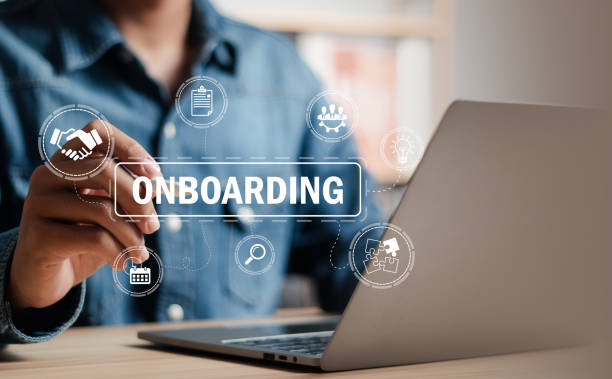Introduction
Welcoming a new employee to your team is always exciting, but when that employee is remote, things can get a little tricky. Unlike traditional onboarding, where employees can pop by a colleague’s desk for a quick chat or get an office tour, remote onboarding requires a bit more planning. But don’t worry—it can be smooth, fun, and even more effective if done right.
Dear Future-Forward Freelancers, in this post, we’ll go over some best practices to ensure your remote employee onboarding process sets the tone for a successful transition. Let’s dive in!
1. Start Before Day One

Onboarding should begin before the official start date. Why? Because getting a head start helps your new hires feel prepared and valued. You can send a welcome email with a roadmap of what to expect, along with essential resources like:
- Login information for tools they’ll need
- An overview of the company culture
- A fun introduction to their team members
This early engagement can calm first-day jitters and build excitement!
2. Set Clear Expectations
When onboarding remote employees, communication is everything. Be crystal clear about their responsibilities, goals, and what success looks like in their new role. Provide them with a clear roadmap and timeline. This can include:
- A checklist of tasks for their first week or month
- A list of key contacts they’ll be working with
- Daily or weekly touchpoints for progress updates
Let your new hire know how you’ll measure their progress, and they’ll be much more confident about their role.
3. Provide the Right Tools
Remote work thrives on tech, so make sure your new employees have all the tools they need before they start. From project management software like Asana or Trello to communication tools like Slack or Zoom, ensure they have the essentials at their fingertips. Also, offer training on how to use these tools, so they’re not overwhelmed on their first day.
Remember: A well-equipped remote worker is a productive one!
4. Create a Welcome Culture

Remote work can sometimes feel isolating, especially for newbies who are still trying to figure out the team dynamics. That’s why creating a welcoming, inclusive environment is crucial. Try these small but impactful ways to help them feel connected:
- Schedule a virtual coffee chat or happy hour with the team
- Create a buddy system, where they’re paired with someone who can guide them during the first few weeks
- Send a small welcome package (think: company swag, a handwritten note, or a snack box!)
Making the first few days feel warm and personal can go a long way in building long-term loyalty.
5. Keep the Communication Flowing
One of the most significant challenges with remote work is staying connected. That’s why frequent check-ins are essential—especially during the onboarding process. Managers should aim for daily or weekly catch-ups to answer questions, clarify goals, and provide feedback.
Pro tip: Have an open-door (or rather, open-Slack) policy! Encourage your new hire to reach out whenever they need assistance.
6. Offer Continuous Support
Onboarding shouldn’t end after the first week or even the first month. Remote employees need continuous support, guidance, and encouragement to thrive. Make sure there’s ongoing training, feedback, and opportunities for professional growth. Also, don’t forget to check in regularly to see how they’re settling in—personally and professionally.
7. Celebrate Milestones

Finally, recognize and celebrate your new employee’s achievements! Whether they’ve completed their first project, hit a key milestone, or simply made it through their first month, a little recognition can boost morale and motivation. A simple shoutout in a team meeting or a celebratory email can make all the difference.
Conclusion: Making Remote Onboarding Count
Remote employee onboarding doesn’t have to be complicated. With a bit of planning, empathy, and communication, you can create an experience that leaves your new hire feeling confident, connected, and ready to contribute. Remember, the goal is not just to teach them the job but to make them feel like a valued part of the team—even from miles away.
By following these best practices, you’ll set up your new remote employees for long-term success, helping them transition smoothly and contribute meaningfully right from the start.
Dr Temitope Olukunle,
University of Freelancing.
https://www.hrcloud.com/blog/proven-tips-for-remote-employee-onboarding


